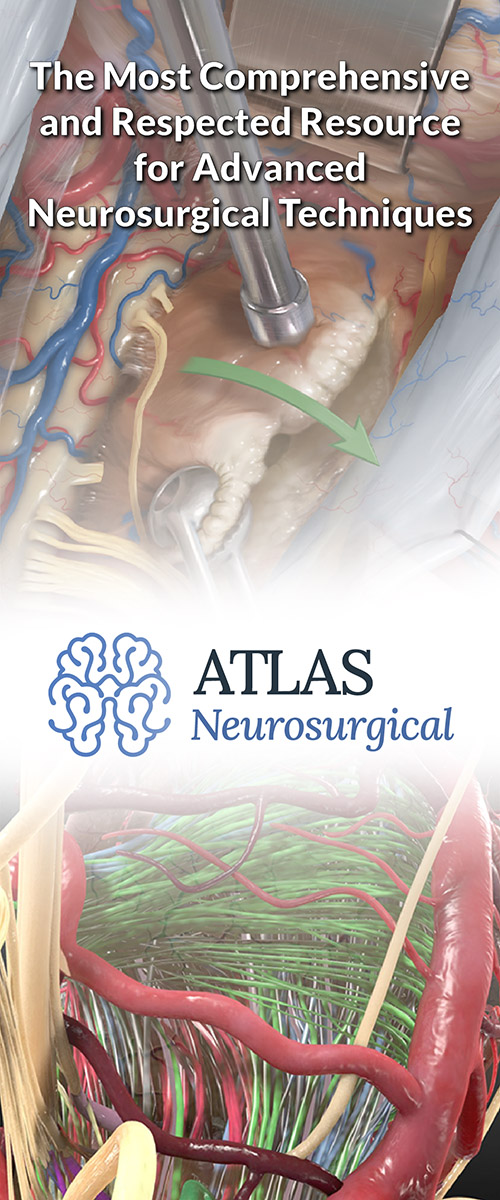Brainstem Glioma in Adults
Brainstem glioma, as the name implies, refers to all gliomas that develop in the brainstem, a critical part of the brain, which is located at the base of the brain. These gliomas are often astrocytomas, the most common type of glioma with different subtypes and grades. We’ll explore brainstem gliomas, their various types and common causes in sections below.
What Is a Brainstem Glioma?
Gliomas are cellular growths originating from within the brain or the spinal cord – specifically, from the glial cells lining the brain, surrounding and protecting the nerve cells. They are more common among children than adults.
To fully understand the potential impact of brainstem glioma in adults, let’s examine the brainstem’s role. It connects the brain to the spinal cord and is accessible from the back of the head.
It is an important part of the brain that facilitates all neural transmissions passing through the spinal cord and the brain. By extension, it is involved in various bodily functions, especially critical autonomic nervous responses like breathing, swallowing, heart rate, and blood pressure.
The brainstem has three parts, and gliomas can form in any of these:
- Midbrain - This is the part of the brain that branches out from the main organ and includes the topmost part of the stem.
- Pons - This is the middle part of the brainstem. It’s the part where most brainstem gliomas develop.
- Medulla Oblongata - This part connects the brain/brainstem to the spinal cord and is crucial in transmitting signals between the two.
Gliomas in the brainstem can disrupt its functionality and affect all other functions where neural transmissions are significantly involved. This is why brainstem glioma can cause many disturbing symptoms.
Are Brainstem Gliomas Benign or Cancerous?
Gliomas can be benign (non-cancerous) or malignant (cancerous). Benign brainstem gliomas, which are rare, are slow-growing. Malignant brainstem gliomas, on the other hand, are more aggressive tumors and can rapidly grow and infiltrate the normal brainstem.
Whether these gliomas are malignant or benign often depends on the patient’s age and the grade of the glioma. For example, Grades 1 and 2 gliomas are low-grade and show benign symptoms. They are much more manageable than Grades 3 and 4 gliomas, which are high-grade and aggressive.
The location of the gliomas is another factor. Tumors originating from the midbrain and medulla oblongata are usually Grade 1. Tumors that develop from the pons are often Grade 4 and progress more rapidly. There’s no scientific explanation yet for why gliomas from the middle portion of the brainstem behave this way.
Why should you have your surgery with Dr. Cohen?
Dr. Cohen
- 7,000+ specialized surgeries performed by your chosen surgeon
- More personalized care
- Extensive experience = higher success rate and quicker recovery times
Major Health Centers
- No control over choosing the surgeon caring for you
- One-size-fits-all care
- Less specialization
For more reasons, please click here.
Types of Brainstem Gliomas
Let’s delve deeper into the different types of brainstem gliomas.
There are two main subtypes of brainstem gliomas:
1. Focal brainstem gliomas - These tumors are the Grades 1 and 2 gliomas that develop in the midbrain and medulla oblongata. They have more benign symptoms and are easier to treat. If the tumors are detected early, they are treatable and can be removed through surgery or placed in remission via radiotherapy.
Focal brainstem gliomas constitute about 20% of all brainstem tumors. They are “focused” because they are often localized in one area of the brainstem and do not infiltrate the normal brainstem.
2. Diffuse intrinsic pontine gliomas (DIPG): These are highly aggressive, Grade 4 tumors originating from the pons. As previously mentioned, they start growing in the middle of the brainstem but will eventually spread to the adjacent tissues and structures.
DIPGs are also called diffuse midline gliomas, named as such because they are commonly “diffuse” or spread out or infiltrating among healthy cells/neurons. They are also commonly found on the midline structures of the brain, like the brainstem and the thalamus. Diffuse midline gliomas may rarely start as Grade 2 or 3, and then turn into Grade 4, but Grade 4 is the most common level of this subtype.
Other types of brainstem gliomas include:
- Tectal plate glioma: A type of focal brainstem glioma that forms in the brain’s tectal plate, which facilitates hearing and sight. These gliomas are low-grade tumors and, fortunately, treatable.
- Dorsally exophytic glioma: Another type of focal brainstem glioma that develops within the fourth ventricle or cerebellopontine angles. These are common in young children and can block cerebrospinal fluid flow, causing hydrocephalus. They are also low-grade tumors but can progress to and grow as Grade 3 gliomas.
- Cervicomedullary brainstem gliomas: These refer to tumors that have spread from the brain, upper cervical cord, or intramedullary spinal cord to the cervicomedullary junction (CMJ).
What Are the Symptoms of Brainstem Glioma?
Learning and understanding the symptoms of brainstem gliomas helps ensure early detection and immediate treatment. Early treatment is crucial for successful symptom management.
These are the common symptoms of brainstem glioma:
- Frequent and severe headaches
- Persistent nausea and vomiting that are unrelated to digestive issues
- Escalating balance problems and coordination issues
- Difficulty with fine motor skills like writing, tracing, drawing, using a pair of scissors, and other activities that require coordination of the eyes and small muscles in the hands and wrists.
- Respiratory problems, specifically erratic and labored breathing
- Changes in speech or sudden difficulty with speaking
- Difficulty swallowing
- Blurred or double vision
- Hearing loss or ringing in the ears
- Muscle weakness in the arms and legs (worst-case scenarios can lead to paralysis)
Many of these symptoms emerge gradually, and the pace of the progression depends on how fast the tumor grows and spreads. Even benign, low-grade gliomas can result in severe manifestations of these symptoms because they are masses of cells that take up space in the brainstem.
As the tumor grows and spreads, it presses against the structures of the brainstem, putting pressure on them, or deforming them.
What Is the Prognosis for Brainstem Glioma in Adults?
The estimated survival periods for adults with brainstem glioma vary. A prognosis is multifactorial, but the primary bases are the tumors’ grade and location.
Generally, patients with low-grade brainstem gliomas can look forward to many more years, especially if they have regular consultations with specialists. The prognosis may extend if a patient qualifies for surgery and the surgeon successfully removes most of the tumor.
On the other hand, grade 4 DIPGs or diffuse midline gliomas have a poor prognosis of a few months to within two years of diagnosis.
Treatment Options for Brainstem Glioma
Neurosurgeons and oncologists recommend any or a combination of the following treatments for brainstem glioma:
- Surgery: Grade 1 gliomas in accessible locations can be removed entirely through surgery. Operating in the vicinity of the brainstem is extremely risky, so highly qualified and experienced surgeons should perform these surgeries.
- Radiation Therapy: If the tumors are Grades 2 to 4 and have infiltrated parts of the brainstem that are too critical to undergo surgery, radiation therapy might be the better option. This usually takes six weeks, depending on the tumors’ progression and location.
- Chemotherapy: Chemotherapy is usually administered to patients dealing with tumor regrowth. Doctors may recommend the usual agents or experimental drugs and therapies.
Consult One of the World’s Most Prominent Neurosurgeons Today
Diagnosing and treating brainstem glioma is a complex process that requires consultations with experts in the field. If you or someone you know is suspected of having this condition, consult a leading expert in neurosurgery and specialized in brain tumors for a more thorough assessment.
Dr. Aaron Cohen-Gadol is one of today’s top neurosurgeons whose expertise has been sought after by patients and specialists worldwide. He has authored various books and peer-reviewed research studies on neurosurgical-focused topics and has performed over 7,000 complex brain surgeries.
Contact us or request a second opinion from Dr. Cohen-Gadol and his team.




